How to cook Shanghai bok choy, Chinese-restaurant style.
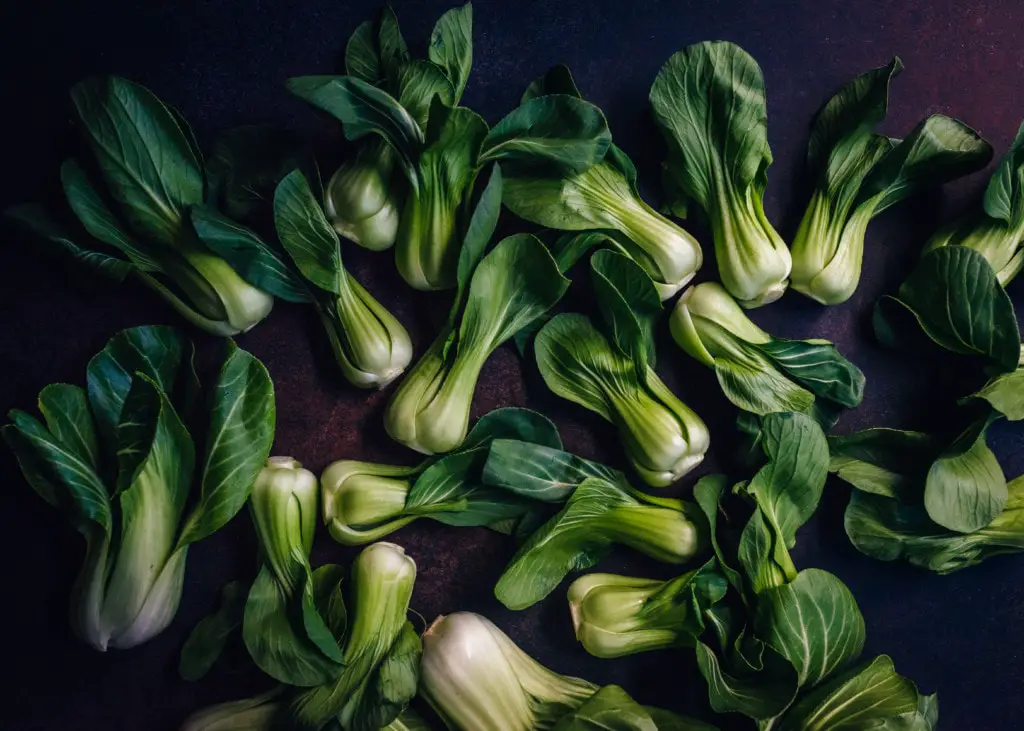
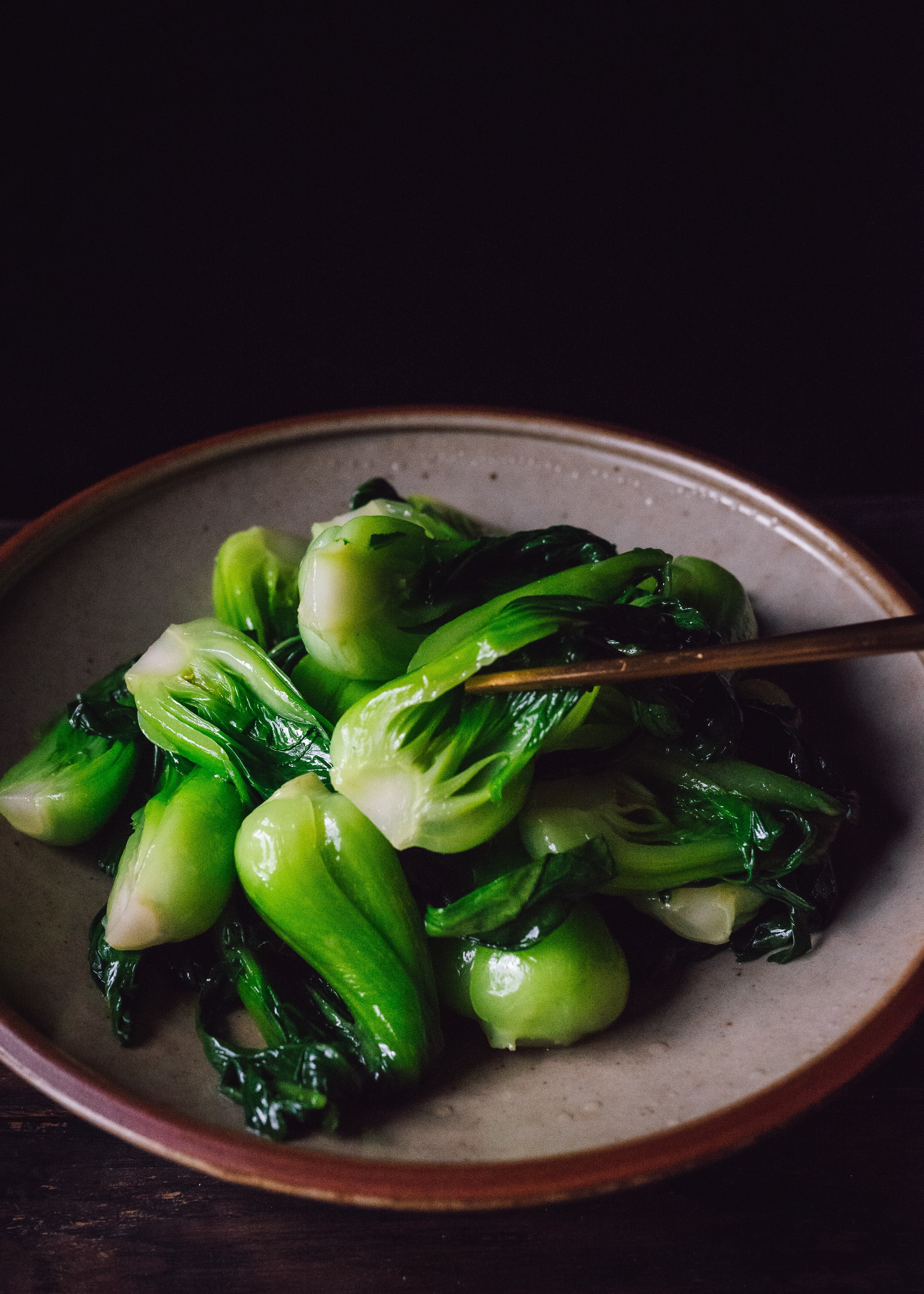
Baby bok choy, known as Shanghai bok choy (shàng hǎi qīng 上海青) in China or qīng jiāng cài (青江菜) in Taiwan, is delicious not necessarily because of its flavor (think mild, sweet, a little bland) but its extreme juiciness. This is why the Chinese method of stir-frying, which is generally fast and done over very high heat, suits bok choy particularly well. The very short cooking time and aromatic oil keeps the leaves soft and glossy, and locks in as much moisture and tenderness as possible in the fat crunchy stems. I’m not the biggest fan of grilling or roasting bok choy— dry heat tends to make the leaves tough and chewy, and it’s easy to either undercook or overcook the stalks.
At Din Tai Fung, we blanch fresh baby bok choy for 15 seconds and then toss it in scallion oil with a white sauce. It’s made to order and served as soon as it comes out of the wok. Each bite is juicy, crisp-tender, savory and laden with the aroma of the scallion oil. It’s the kind of dish that stinks up your car if you order takeout— or, in my case, people giving me side-eye on public transit. But I am very okay with green oniony smells wafting from my backpack on the Portland TriMet, because I know the food’s going to be delicious.
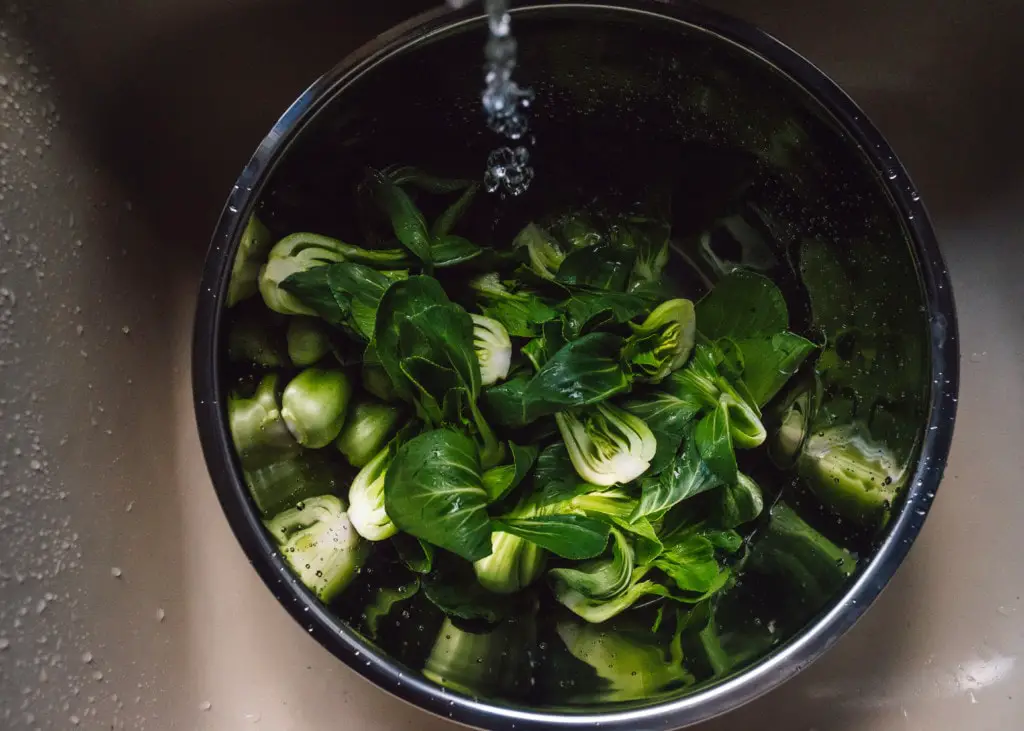
Step 1: Prep the bok choy.
For baby bok choy, cut the stalks in half and tear to separate the leaves. For larger bok choy, cut in half and then split into quarters. Try to keep the stems and the leaves attached.
It’s crucial to wash bok choy well, since grit gets trapped between the stalks and you don’t want to bite into anything unpleasant while eating. Soak the cut bok choy in a big basin of water and run your fingers through to loosen any dirt or sand. Rinse and empty out the water, then soak again, repeating until the water is clear and free of grit.
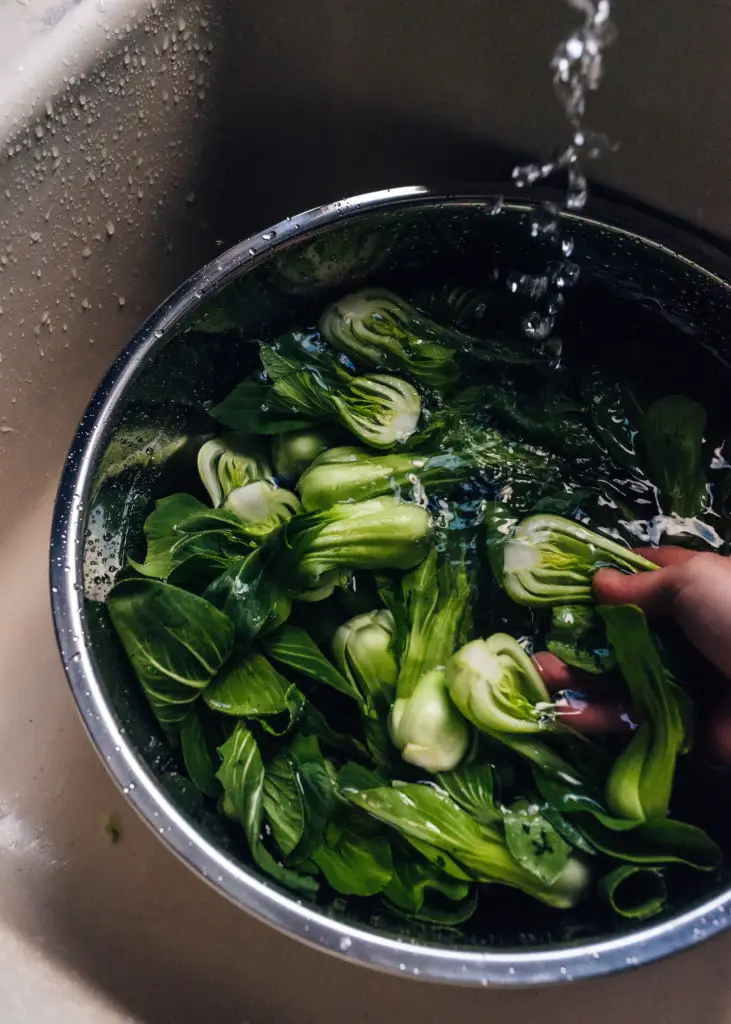
Step 2: Prepare the white sauce and the starch slurry.
Chinese restaurants use what’s called a “white sauce” (bái zhī 白汁): a mixture of salt, sugar, and either MSG or mushroom bouillon powder for savoriness, dissolved in water. You’d be surprised how flavorful this sauce is. I avoid soy sauce, because the natural color of bok choy is so gorgeous and shines with a clear sauce— you don’t want to mask the original flavor (yúan wèi 原味) of the bok choy with extraneous flavors. The dish should be qīng dàn 清淡, light and refreshing.
In a separate small bowl, mix together the cornstarch (or potato starch) and water. This will be the starch slurry. Starch slurry is added at the very end, so that all the savory, flavorful liquid pooled at the bottom of the wok adheres or “hooks” back onto the bok choy. The slurry also creates a succulent, velvety mouthfeel and adds a glisten to the juicy stems.
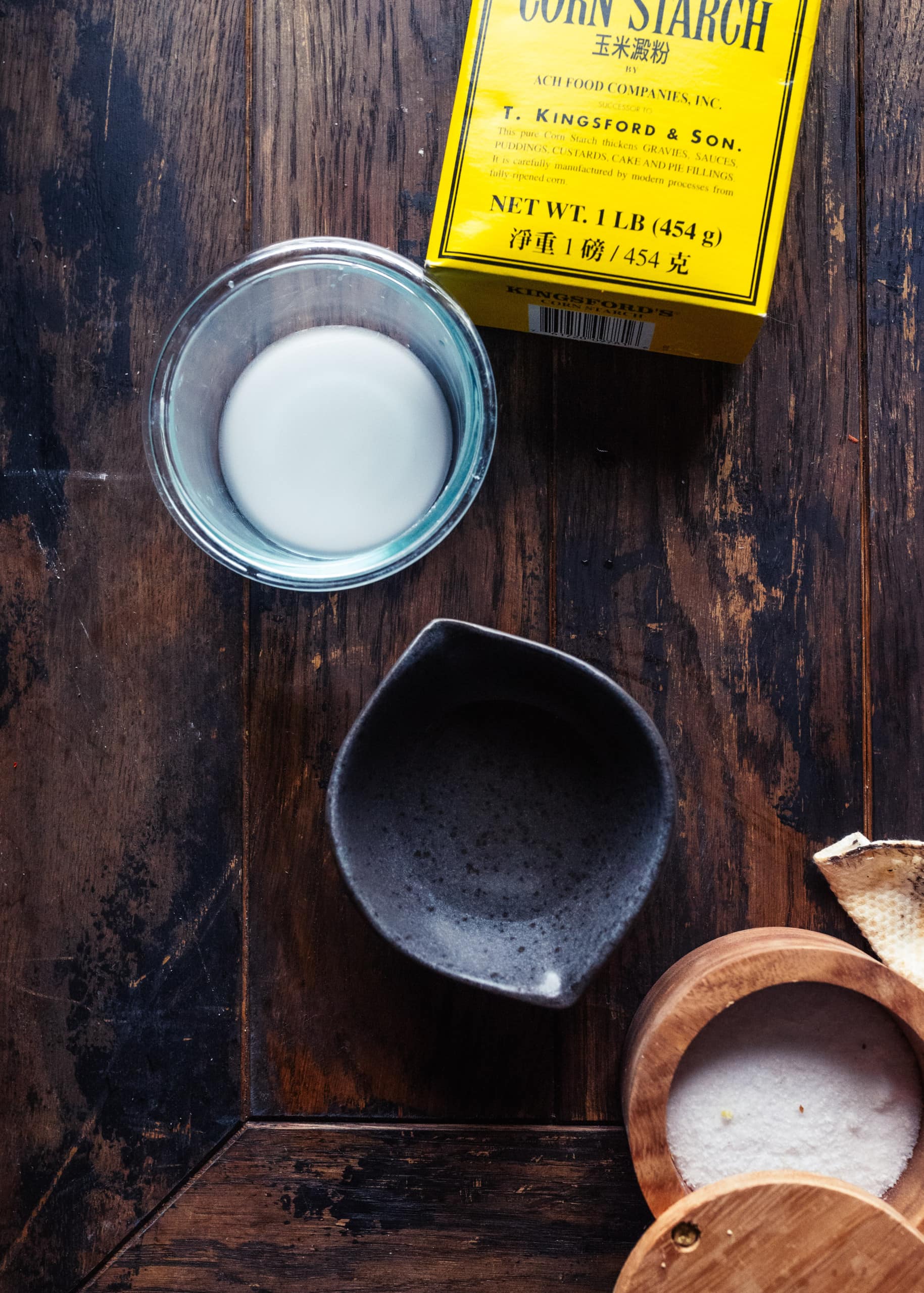
Step 3: Blanch the bok choy.
Bring a big pot of water to a rolling boil and blanch the bok choy for 30 seconds to 1 minute, until the bok choy is about 70% cooked (七成熟). It doesn’t need to be salted water. If you are impatient like me and don’t want to wait for water to come to a boil, use boiling water from a kettle— it saves a lot of time.
The blanching time will depend on the ratio of boiling water to bok choy in your pot. More boiling water means that the temperature won’t drop as drastically when you add the bok choy, so it’ll take less time to blanch.
Keep an eye out for color: the stalks should be vibrant green and still crunchy, and the leaves slightly wilted. It’s extremely important that you don’t overcook at this point, as you’ll be cooking the bok choy a second time in the wok. Haul the bok choy out with a colander or strainer and shake it a few times to drain the excess water. Move immediately to the stir-frying step.
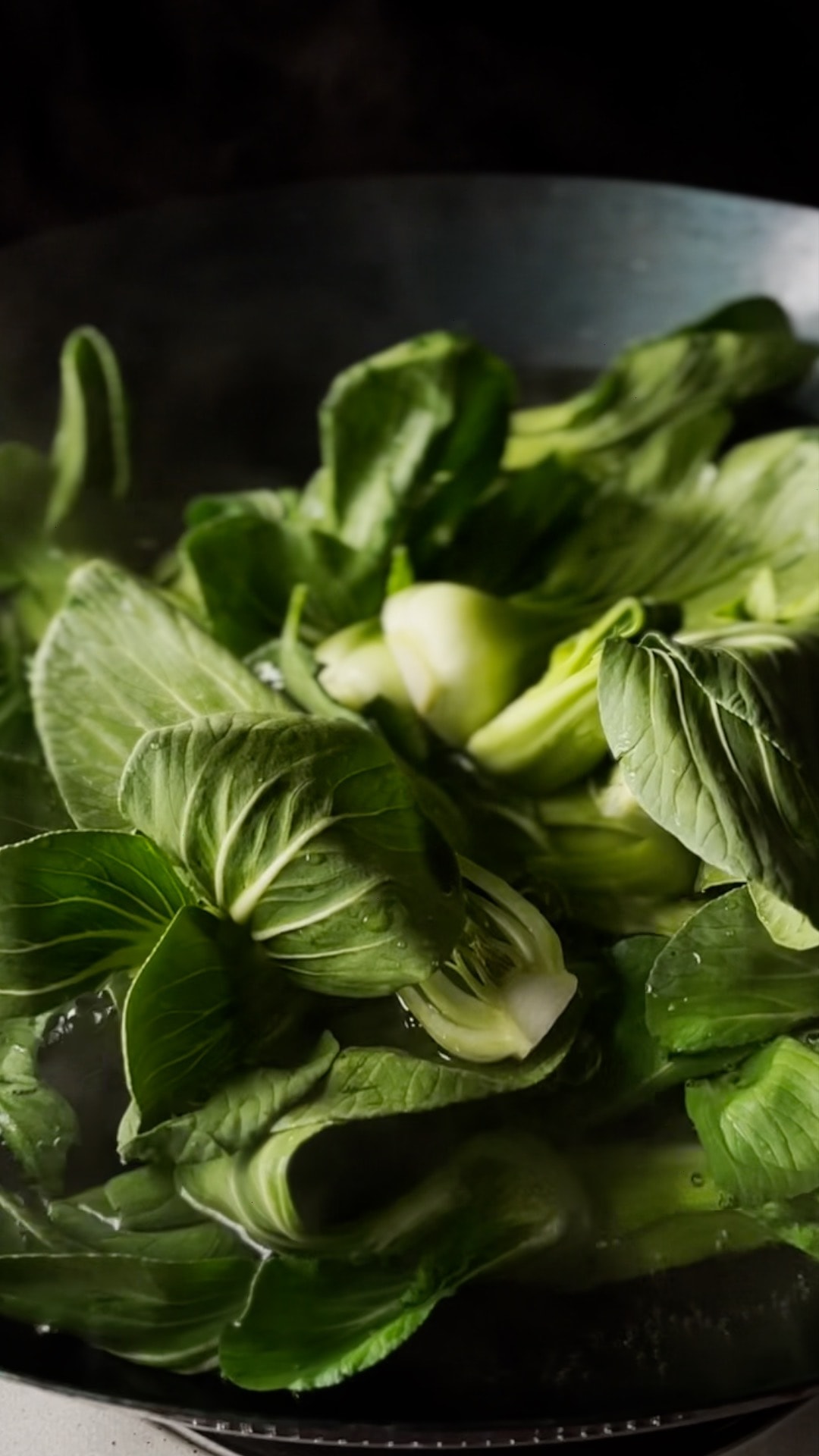
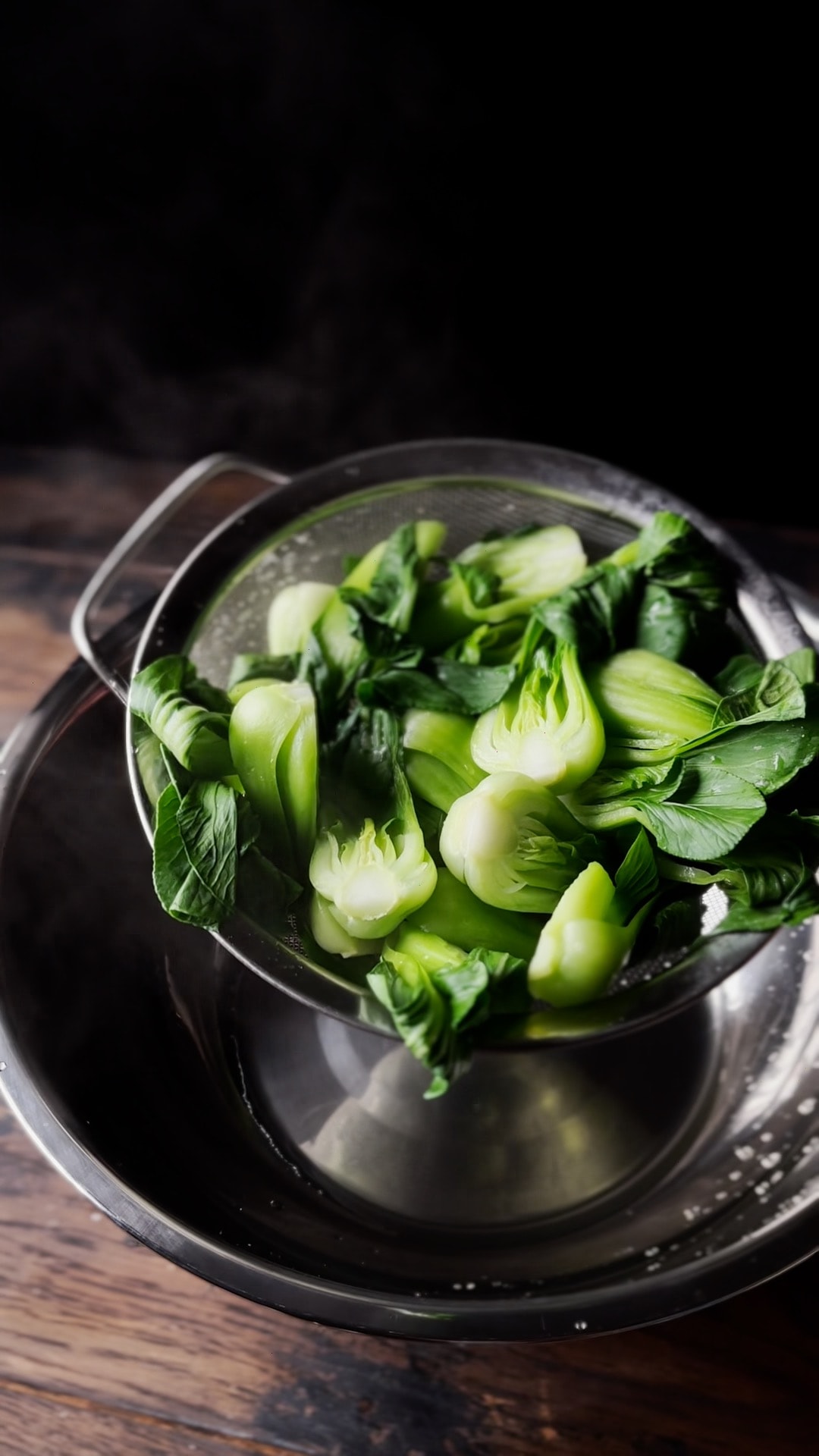
Step 3: Stir-fry the bok choy.
Heat the wok over medium-high heat until it’s slightly smoking, then add the scallion oil and swirl to coat the sides. Add the bok choy and toss just long enough so that it’s coated in the fragrant oil, then pour in the white sauce and stir until incorporated. Give the starch slurry a whisk and add it to the center of the wok. Briskly fold it in until the liquid at the bottom of the wok thickens and clings to the stalks and leaves.
This entire process should take less than a minute— remember, the bok choy is already cooked from the blanching step. You just want to coat it in the oil and the seasonings.
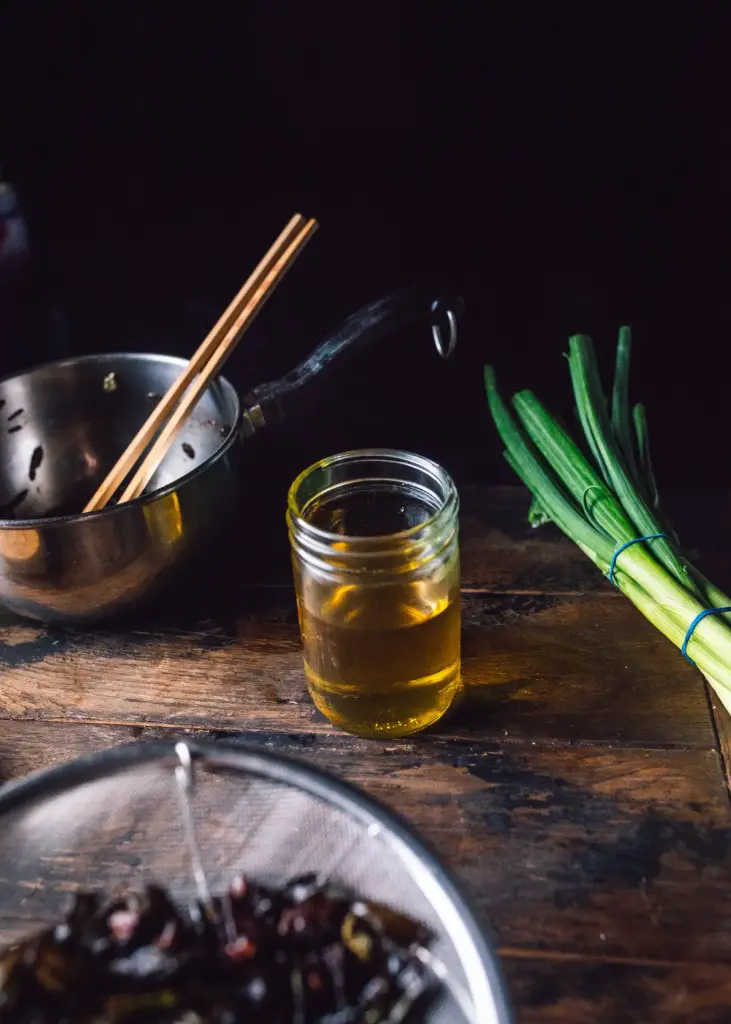
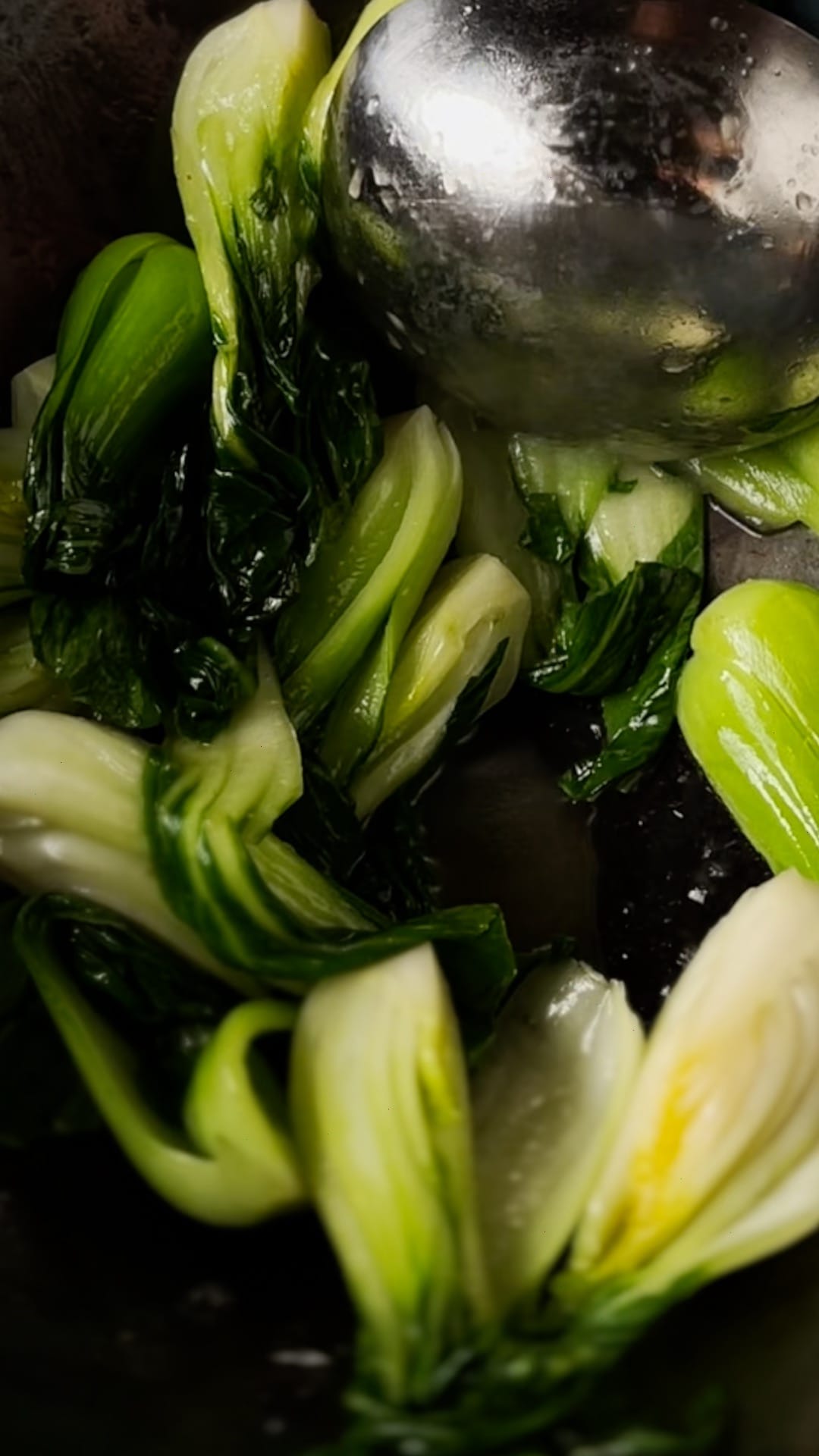
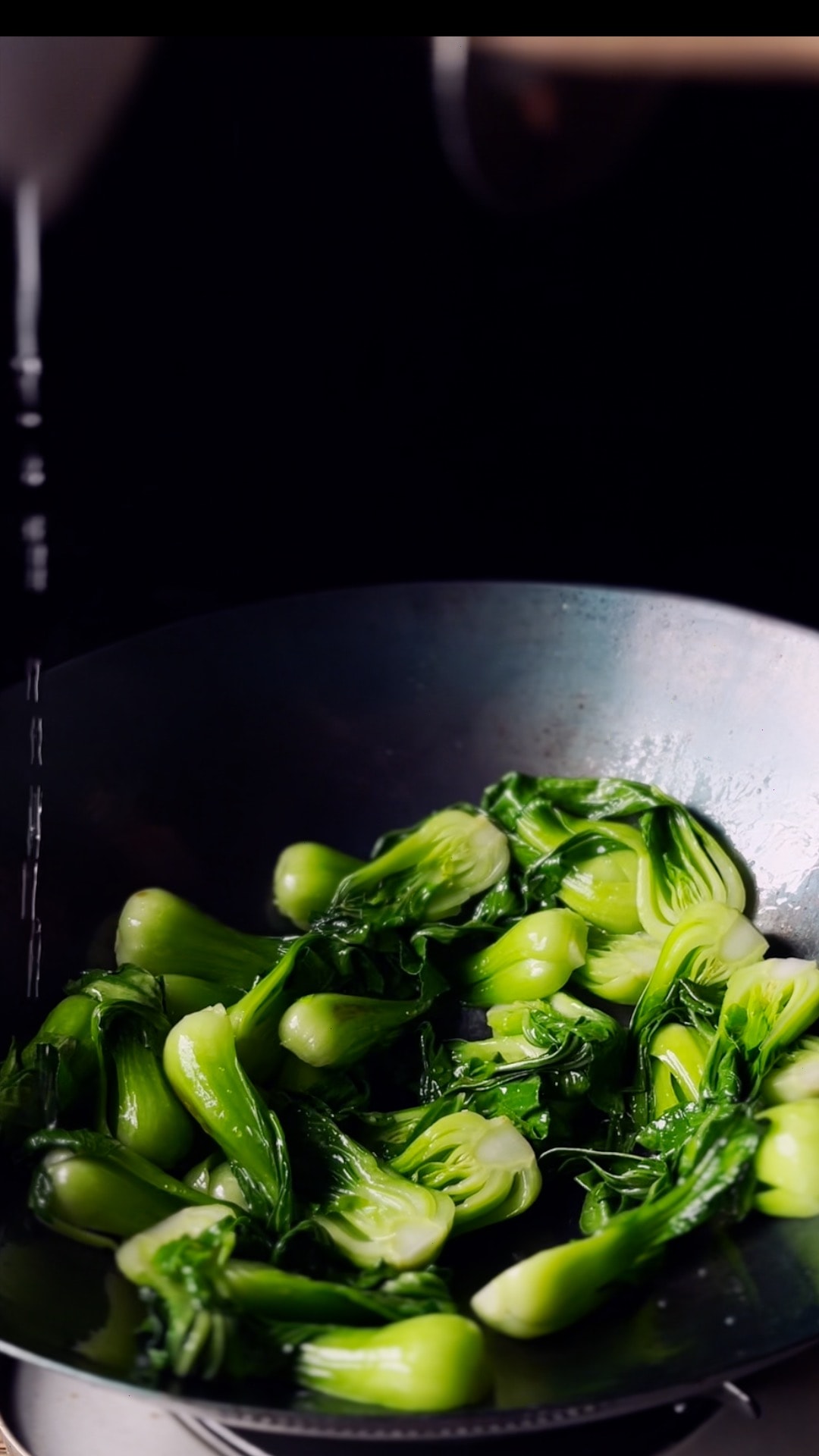

Step 4: Serve!
This dish is great as a vegetable side served with rice.
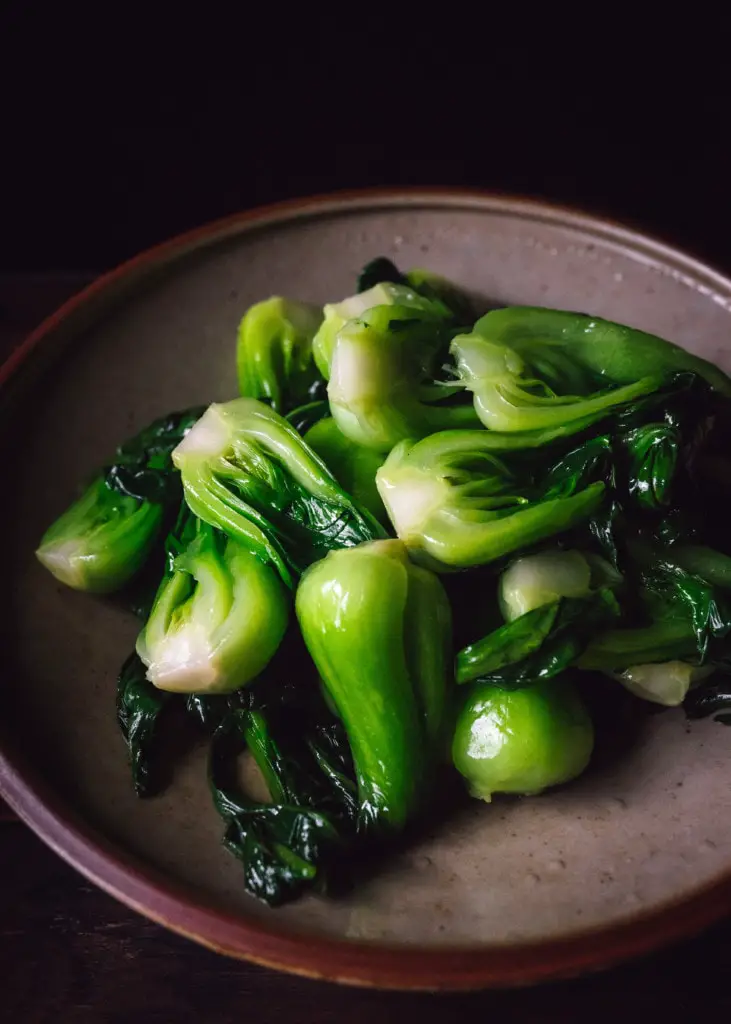
Why do I need to blanch the bok choy?
Snce bok choy stalks are so thick, throwing them directly into a wok tends to leave them undercooked. Blanching locks in their crisp-tender, juicy crunch and preserves the moisture of the leaves, ensuring that the stir-frying time later can be extremely brief, just long enough to coat everything in the oil and seasonings.
Do I need to use scallion oil?
You can use plain cooking oil and simply toss a few thinly sliced scallions into the wok, but it’s not going to be as flavorful as oil that’s slowly infused with sizzling, toasting scallions. Scallion oil is easy to make and keeps well in the fridge— it’s a convenient way to add enticing oniony flavor to any dish.
Can I add more aromatics?
Yes! For a homestyle version, the “clean” presentation of the dish isn’t as important, so if you’d like, you can add 2-3 cloves of garlic, thinly sliced, or a few slices of peeled fresh ginger. Stir-fry the aromatics briefly in the heated oil before you add the bok choy.
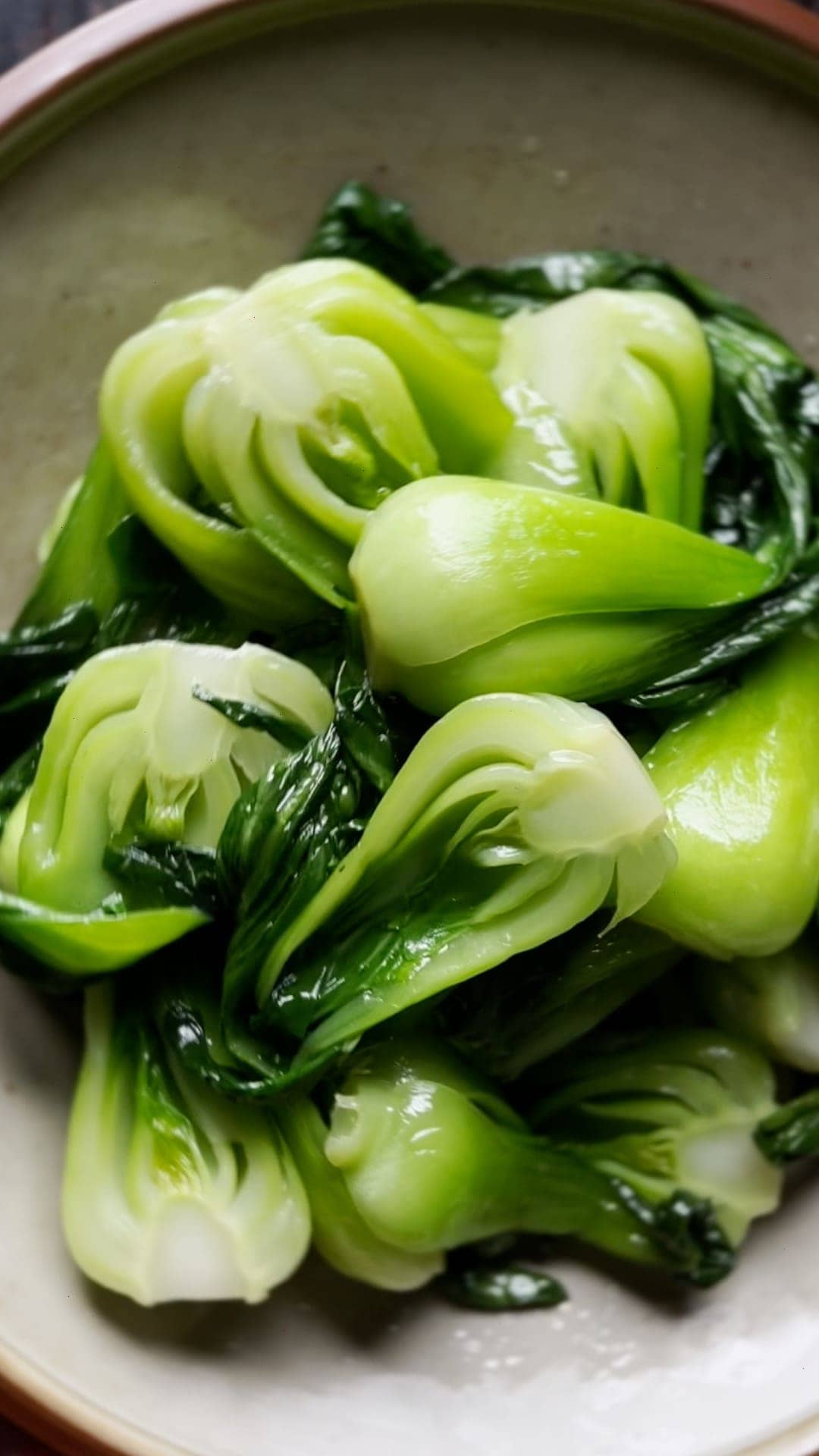

How to Make Scallion Oil
Print📖 Recipe
Simple Stir-Fried Bok Choy with Scallion Oil 清炒上海青
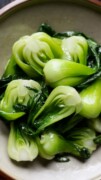
How to cook bok choy, Chinese-restaurant style. A piping hot dish of juicy, succulent stems and soft, fragrant leaves, sautéed with scallion oil.
- Prep Time: 15
- Cook Time: 5
- Total Time: 20 minutes
- Yield: 4 1x
- Category: Leafy Greens
- Method: Stir-fry
- Cuisine: Chinese
- Diet: Vegan
Ingredients
- 1 pound (450 grams) bok choy, ends trimmed, halved or quartered
- 2 tablespoons scallion oil
- Optional aromatics: a handful of thinly sliced scallions (both green and white parts), sliced garlic, or sliced (peeled) ginger
The white sauce:
- 1 teaspoon kosher salt
- ¾ teaspoon sugar
- ¼ teaspoon MSG or ½ teaspoon mushroom bouillon powder
The starch slurry:
- ½ teaspoon potato starch or ¾ teaspoon cornstarch
- 2 tablespoons cold water
Instructions
- Wash the bok choy. Trim the bottom end of each stalk with a paring knife— don’t cut too much, as you want to try to keep the stems and leaves attached. Cut the stalks in half and tear to separate the leaves. Cut any larger bok choy into quarters. Soak the bok choy pieces in a big basin of water and run your fingers through to loosen any dirt or sand between the stalks. Rinse and empty out the water, then soak again, repeating until the water is clear and free of grit.
- Prepare the sauce and the starch slurry. In a small bowl, combine the salt, sugar, and MSG or bouillon powder and water, and whisk until dissolved. In a separate small bowl, mix together the cornstarch (or potato starch) and water.
- Blanch the bok choy. Bring a big pot of water to a rolling boil and blanch the bok choy for 30 seconds to 1 minute, until the bok choy is about 70% cooked (七成熟). Tip: use boiling water from a kettle— it’s much faster! The stalks should be vibrant green but still crunchy, and the leaves slightly softened. It’s extremely important that you don’t overcook the bok choy at this point, as you’ll be cooking a second time in the wok. Haul the bok choy out with a colander or strainer and shake a few times to drain (no need to shock in cold water).
- Stir-fry. Heat the wok over medium-high heat until it’s slightly smoking, then add the scallion oil and swirl to coat the sides. Add the optional aromatics, if using, and stir-fry until fragrant. Add the blanched bok choy and toss just long enough so that it’s coated in the fragrant oil, then give the sauce a whisk and stir it in until incorporated. Give the starch slurry a whisk and add it to the center of the wok. Briskly fold it in until the liquid at the bottom of the wok thickens and clings to the stalks and leaves.
- Serve immediately! This makes a wonderful vegetable dish served with rice.
Notes
- If you don’t have scallion oil on hand, simply use regular vegetable oil and scallions (both white and green parts, thinly sliced), added to the wok after you heat the oil.
- The stir-frying should also take less than a minute— remember, the bok choy is already cooked from the blanching step. You just want to coat it in the oil and the seasonings.

Comments
No Comments